Judo For Self Defense - Here Is Why Is Judo Best For Self-Defense
Share

Judo For Self Defense packs a punch. This martial art, born in Japan, turns attackers' strength against them. No need for brute force here. Smart moves win the day.
Judo's power lies in its simplicity. Short, sharp actions floor foes fast. The O Soto-Gari throw? It's a game-changer. One sweep, and down they go. Ground control follows. The attacker's pinned, helpless.
But judo's not just physical. It sharpens the mind too. You learn to read situations, spot dangers before they strike. It's like having a sixth sense for trouble.
Size doesn't matter in judo. Technique trumps muscle. A small defender can topple a giant attacker. It's all about leverage and timing.
Judo builds confidence. You walk taller, knowing you can handle threats. But it also teaches restraint. The best fight? The one you avoid.
Practice makes perfect. Regular training hones your skills. Your body reacts without thinking. That's crucial when danger strikes.
Judo's not flashy. It's effective. No high kicks or fancy moves. Just practical, proven techniques that work on the street.
In short, judo offers real-world self-defense. It's a shield and a sword, protecting you from harm while giving you the tools to fight back if needed. Master judo, master your safety.
Training in Judo not only enhances physical fitness—improving strength, flexibility, balance, and endurance—but also cultivates vital situational awareness, emotional resilience, and quick reflexes.
Practitioners experience a profound sense of empowerment and boosted confidence beyond martial arts.
With a strong emphasis on respect, discipline, and restraint, Judo practitioners learn to make informed decisions under pressure, such as assessing risks and choosing the appropriate response in potentially dangerous situations.
Mastering these diverse skill sets not only equips individuals for real-life encounters but also fosters a robust sense of community, camaraderie, and mutual support among practitioners.
Moreover, Judo teaches essential principles of strategy, timing, and adaptability, enabling individuals to navigate a variety of self-defence scenarios.
Whether facing one or multiple attackers, Judo techniques can be effectively applied to neutralise threats while minimising harm to all parties involved.
There is a wealth of knowledge and skills to explore within Judo, which can significantly enhance one's self-defence capabilities and overall personal safety.
Key Takeaways
- Judo is a martial art that emphasizes effective techniques such as osoto-gari (major outer reap) and seoi nage (shoulder throw), which focus on leveraging an opponent's energy and momentum for successful takedowns and throws.
- Ground control is a critical aspect of judo, allowing practitioners to subdue aggressors through the application of joint locks, pins, and chokes, effectively neutralizing threats in close combat situations.
- The practice of safe falling techniques, known as ukemi, is essential in judo as it minimizes the risk of injury during training sessions, fostering a safer and more supportive learning environment for all practitioners.
- Regular training in judo significantly enhances physical fitness, increasing strength, flexibility, endurance, and situational awareness, all of which are vital components for effective self-defense in real-world encounters.
- Judo instills values of respect, discipline, and restraint, promoting controlled and measured responses to potential threats while simultaneously building confidence, emotional regulation, and mental clarity in stressful situations.
Benefits of Judo for Self Defense
Judo offers numerous advantages for self-defense, providing practitioners with a comprehensive toolkit of effective techniques and the mental fortitude needed to navigate real-world confrontations with confidence.
One significant benefit of judo is its focus on effective takedowns and throws. This martial art leverages an opponent's energy and momentum against them, making it applicable for individuals of all sizes and physical abilities.
This is particularly advantageous when facing larger or stronger attackers, as judo techniques allow a smaller defender to gain the upper hand.
Moreover, judo excels in ground control. Once an assailant is taken to the ground, practitioners can employ a variety of joint locks, pins, and chokes to immobilize and subdue them effectively.
This ground fighting aspect is critical in self-defense, as it enables a defender to maintain control over the situation.
In contrast to striking-based martial arts, judo presents a lower risk of injury, which benefits both the defender and the aggressor.
This safety aspect encourages more individuals to practice judo, knowing they're less likely to sustain serious injuries during training or in a self-defense scenario.
Regular judo practice significantly enhances physical fitness. Participants can expect improvements in strength, flexibility, coordination, balance, and endurance—all of which are crucial attributes in self-defense situations.
Additionally, judo cultivates situational awareness. Practitioners learn to read body language, anticipate movements, and respond appropriately, skills that can be invaluable in potentially dangerous encounters. This heightened awareness can help individuals avoid confrontations or react swiftly if a threat arises.
Crucially, judo emphasises non-violent options and encourages practitioners to prioritise de-escalation. This approach promotes conflict resolution without resorting to violence whenever possible.
Judo training builds self-confidence and empowerment, equipping individuals with the tools they need to protect themselves when necessary.
The real-world applicability of judo techniques ensures their relevance in various self-defence situations, making it a practical choice for those looking to enhance their personal safety.
Key Judo Techniques to Learn for Self Defense
Mastering essential judo techniques significantly enhances self-defence skills in real-world confrontations. Two key techniques to focus on are Osoto-gari and Kouchi Gari.
These methods utilise balance, timing, and leverage principles, allowing individuals to neutralise attackers, irrespective of their size or strength effectively.
| Technique | Description |
|---|---|
| Osoto-gari | A dynamic and powerful foot technique that reaps or sweeps the opponent's leg, disrupting their balance and using their weight against them. This technique is particularly effective in overcoming larger adversaries. |
| Kouchi Gari | A versatile inner reap targeting the opponent's foot, providing control while minimizing exposure. It allows the defender to maintain a forward-facing position against the attacker, enhancing safety and readiness. |
Both Osoto-gari and Kouchi Gari emphasize the strategic use of leverage rather than relying on brute strength, making them critical techniques for self-defense.
Osoto-gari shines in encounters with bigger opponents, providing an effective means of control, while Kouchi Gari offers adaptability across a range of situations, whether standing or grappling.
Learning and practising these techniques empowers individuals to respond confidently and effectively in self-defence scenarios.
Judo Vs. Other Martial Arts for Self Defense
When assessing judo in relation to other martial arts for self-defense, its distinctive focus on leverage, balance, and technique becomes evident, especially in close-quarters confrontations.
Judo excels in scenarios where attackers are within arm's reach, effectively employing a range of throws, grappling maneuvers, and joint locks to neutralize threats.
The art's practical takedown skills empower practitioners to harness an opponent's momentum, swiftly concluding altercations with precision and efficacy.
In the realm of ground control, judo imparts essential techniques that enable practitioners to pin, control, and subdue aggressors.
While it may not specialize in ground fighting to the extent that Brazilian Jiu-Jitsu does, judo still offers valuable insights into maintaining dominance on the ground.
An important aspect of judo is its emphasis on injury prevention—through the cultivation of safe falling techniques known as ukemi—minimizing the risk of serious injury for both the defender and the aggressor alike.
Although judo doesn't incorporate striking techniques and relies primarily on gripping the opponent's clothing, its foundational principles of leverage, balance, and body mechanics make it accessible and effective for individuals of all sizes and physical capabilities.
This inclusivity enhances personal safety, particularly against larger opponents who may possess greater strength.
To develop a comprehensive and well-rounded self-defense strategy, many martial artists find it advantageous to cross-train in striking disciplines such as boxing, Muay Thai, or kickboxing.
This multifaceted approach equips practitioners with a broader skill set, enabling them to respond effectively in various situations.
Judo stands out in close combat scenarios, making it a formidable and valuable option for self-defense, particularly when combined with other martial arts techniques.
Training Judo for Real-Life Self Defense Scenarios
To effectively prepare for real-life self-defense scenarios through judo training, practitioners must adopt a step-by-step approach that emphasizes essential skills and techniques.
First, they should concentrate on high-percentage throwing techniques like osoto gari and seoi nage. These throws are crucial for destabilizing an opponent.
Additionally, practitioners should focus on control positions and submissions, which are vital for subduing an attacker once they're off balance.
Each training session should incorporate grip fighting, a fundamental skill that allows practitioners to establish and maintain control over an opponent's balance quickly. Mastering grip fighting enhances overall effectiveness in real confrontations.
Incorporating scenario-based training is equally important. Practitioners need to practice techniques from common attack positions, such as chokes or holds, and drill escapes from these situations.
Simulating various environments—whether indoors, outdoors, or in confined spaces—will help prepare them for unpredictable encounters beyond the judo mat.
Developing situational awareness is crucial for self-defense. Practitioners should be trained to recognize potential threats, pre-attack indicators, and the overall environment. This awareness can help them avoid confrontations altogether, ensuring they remain safe.
Training against non-compliant opponents is also essential. Practitioners should practice against strikes and learn how to execute proper ukemi, or breakfalls. This training prepares individuals for the unpredictability of real-life encounters where an attacker may not follow the rules of sport.
Finally, understanding the legal rights and responsibilities associated with self-defence is imperative. Practitioners must learn to use appropriate force and to articulate their actions clearly if questioned by authorities.
This knowledge not only enhances their self-defence capabilities but also ensures they remain mindful of legal implications.
Judo for Building Confidence and Awareness
Practitioners of judo not only improve their self-defense abilities but also develop a profound sense of confidence and heightened self-awareness through structured training and skill enhancement.
The journey of mastering judo fosters a fulfilling sense of accomplishment as individuals set specific goals and achieve them, which significantly boosts their self-confidence. This ongoing process of self-improvement empowers them to uncover their potential and trust in their capabilities.
Participants experience significant physical empowerment, becoming stronger, more agile, and more resilient. Acquiring self-defence skills instils a deep sense of security and personal safety.
The supportive training environment encourages social interaction, fostering strong community bonds and friendships. Emotional regulation during intense sparring sessions enhances mental resilience and adaptability.
Engaging in real-time problem-solving during practice sharpens quick decision-making skills and strategic thinking.
Through these diverse aspects, judo practitioners cultivate a robust mind-body connection, leading to enhanced overall self-awareness.
They learn to effectively recognize and manage their emotions, which translates to greater awareness and mindfulness in daily life.
With each training session, they reflect on their personal progress, identify areas for improvement, and reinforce their commitment to self-growth.
Ultimately, the synergy of confidence and self-awareness gained through judo equips individuals with invaluable tools for navigating challenges both in the dojo and in everyday life, fostering a well-rounded, empowered individual.
The Role of Respect and Restraint in Judo and Self Defense
Respect and restraint serve as the fundamental pillars of judo, guiding practitioners in their approach to self-defense while promoting ethical behavior and effective conflict resolution.
Respect is an essential component of judo, expressed through various symbolic gestures like bowing and other forms of acknowledgement. These gestures signify mutual appreciation and recognition among practitioners, fostering a culture of camaraderie and honour.
This respect transcends the dojo, creating an environment where individuals learn to value themselves and others, cultivating a sense of community and shared responsibility.
In self-defense situations, the principle of restraint becomes paramount. Judo instructs practitioners to employ reasonable and measured force, ensuring that any defensive actions taken are proportional to the level of threat faced.
The focus on controlled techniques, such as throws, joint locks, and holds, empowers individuals to neutralize aggressors effectively while minimizing the risk of inflicting unnecessary harm. This emphasis on restraint not only protects the defender but also preserves the integrity of all parties involved.
Furthermore, the mental discipline honed in judo translates into enhanced decision-making skills under pressure. Practitioners develop acute situational awareness, which sharpens their ability to assess threats accurately and respond appropriately.
Getting Started With Judo for Self Defense
Starting judo for self-defense is a journey that demands dedication, discipline, and a focus on core principles.
To effectively harness judo techniques for personal safety, practitioners must cultivate physical skills and a vigilant mindset. Here's a step-by-step guide to get started:
- Awareness and Prevention: The first step in self-defense is learning to recognise potential threats. This includes being aware of your surroundings, understanding body language, and identifying warning signs that may indicate a confrontation is imminent. Avoiding conflict is always the best strategy.
- Fundamental Techniques: Focus on mastering key judo throws such as Osoto Gari (major outer reap) and Ippon Seoi Nage (one-arm shoulder throw). These foundational techniques aren't only essential for competition but also highly effective in real-life situations.
- De-escalation Skills: Develop the ability to diffuse tension before it escalates into violence. This can involve verbal communication, maintaining a calm demeanor, and using non-threatening body language to ease the situation.
- Defense Against Strikes: Train specifically to counter various types of strikes. Understanding how to evade, block, and respond to punches or kicks can significantly enhance your self-defense capabilities.
- Mindset of Respect and Restraint: Cultivating a mindset of respect for others and restraint in your actions is crucial. Judo isn't just about physical strength; it's about judicious action and knowing when to engage or disengage.
- Regular Training: Consistent practice is key. Regularly attend judo classes to reinforce your techniques and improve your reflexes. This will help you respond effectively and calmly in high-pressure situations.
- Real-world Application: Focus on how to adapt judo techniques for practical use in self-defence scenarios. This may involve adjusting your movements based on the environment or the specific situation you face.
Frequently Asked Questions
Can You Defend Yourself With Judo?
Judo is a martial art that emphasizes the use of an opponent's force and momentum to defend oneself efficiently. By mastering techniques such as throws, holds, and joint locks, practitioners gain not only physical skills but also mental resilience.
This discipline cultivates confidence, enabling individuals to handle confrontational situations with poise, regardless of their body size, strength, or physical abilities. Judo teaches valuable lessons in balance, timing, and strategy, making it an effective self-defense system for anyone willing to learn and practice.
Whether faced with an aggressive adversary or an unexpected threat, judo practitioners can respond with precision and control, turning the tables on their opponents.
Is Judo Useful in a Street Fight?
In the chaotic and unpredictable environment of a street fight, judo stands out as a powerful martial art. It employs refined techniques and strategic leverage, allowing practitioners to manipulate their opponents, regardless of size or strength skillfully.
With its emphasis on balance, timing, and fluid movements, judo enables fighters to swiftly and effectively neutralize larger aggressors. The principles of judo—such as throws, joint locks, and pins—are designed to maximise efficiency and control in high-pressure situations. This makes judo not just a sport but a practical self-defence system.
In the heat of confrontation, judokas can adapt their skills to respond to various scenarios, showcasing the art's versatility and effectiveness in real-world situations.
Is Judo a Self-Defence Sport?
Judo is a well-recognized self-defense sport that emphasises leverage, technique, and strategy. Practitioners learn to use their opponent's strength and movements against them, allowing for effective neutralisation of threats.
This martial art builds confidence, enhances situational awareness, and fosters discipline.
Moreover, judo promotes principles such as respect, restraint, and humility, encouraging individuals to avoid unnecessary conflict and aggression.
Through rigorous training, participants develop physical skills, mental fortitude, and a deeper understanding of body mechanics.
As a result, judo serves not only as a means of self-defense but also as a holistic approach to personal development and conflict resolution in various real-life situations.
Is Judo Defensive or Offensive?
Judo fundamentally emphasizes defensive techniques, strategically using an opponent's momentum to neutralize threats and create opportunities. The art focuses on principles of control, balance, and leverage, allowing practitioners to effectively counter aggressive actions without resorting to direct confrontation.
This discipline fosters a mindset that prioritizes safety, skillful restraint, and the ability to redirect energy, highlighting the importance of awareness and adaptability in dynamic situations.
In essence, Judo cultivates not just physical prowess but also mental acuity, valuing strategic thinking and the effective management of confrontations over sheer aggression.
Conclusion
Judo is a powerful self-defence system, much like a meticulously organised toolbox brimming with vital instruments for safeguarding oneself. A skilled carpenter expertly wields tools such as hammers, saws, and chisels to create and construct; similarly, judokas master a diverse array of techniques, including throws, holds, and joint locks, .
By embracing the practice of judo, individuals not only gain essential physical abilities, such as strength, agility, and coordination, but also cultivate vital mental attributes, including resilience, discipline, respect, and situational awareness. This holistic approach fosters a robust foundation for personal safety and well-being.
Ultimately, judo empowers practitioners to face life's myriad challenges with unwavering confidence, calmness, and poise.
Through rigorous training and persistent dedication, individuals learn to navigate confrontations and potentially dangerous situations, transforming themselves into capable defenders of their own safety while also promoting a culture of respect and understanding within their communities.
Related Posts
-
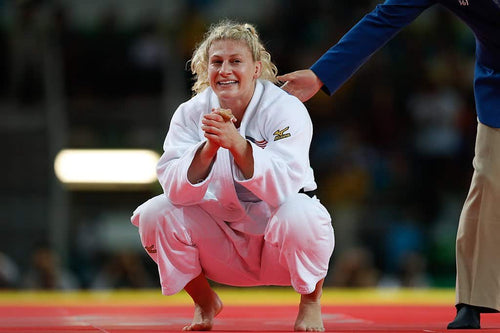
Kayla Harrison's Judo Journey - Judo Champion Turned MMA Powerhouse
Kayla Harrison is a groundbreaking American judoka who made history by becoming the first American woman to win an Ol...
-

Judo Atlanta - List of Judo Clubs in Atlanta area
In Atlanta, you can find excellent judo clubs such as Atlanta Judo Midtown and Black Ice Fitness where you can train...
-

Guram Tushishvili Disqualified - JUDO DRAMA with Teddy Riner
Guram Tushishvili Disqualified - Unsportsmanlike Behavior to French Judoka Teddy Riner Leads to Disqualification fro...
-

Yeldos Smetov - Judoka Profile
Yeldos Smetov, a name synonymous with excellence in judo, has carved out an illustrious career that stands as a beac...
-

Judo Olympics 2024 Results - Gold, Silver, and Bronze Medalists
The Judo Olympics 2024 Results are eagerly anticipated as the Paris Games approach, promising a thrilling display...
-
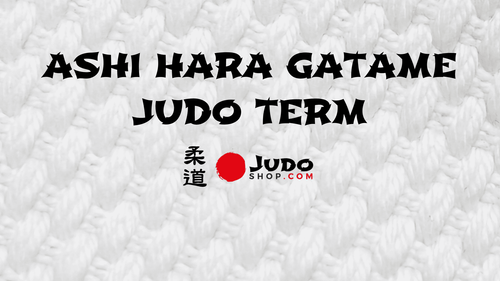
Ashi Hara Gatame - Judo Term Explained
Ashi Hara Gatame is a specialized technique in the martial art of judo, combining leg control, abdominal pressure, a...
-
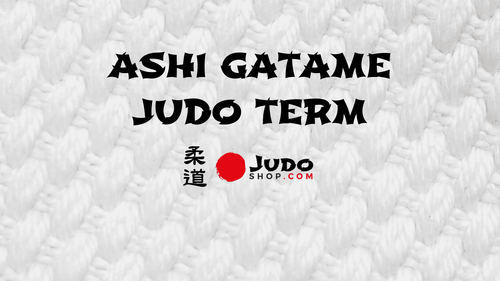
Ashi Gatame - Judo Term Explained
Ashi Gatame is a Judo technique referring to a kansetsu-waza (joint lock) where one uses their legs to immobilise ...
-

Judo Olympics 2024: Highlights, Athletes, and Schedules
Judo Olympics 2024 enthusiasts, mark your calendars! From July 27 to August 3, the Grand Palais Éphémère near the Eif...
-
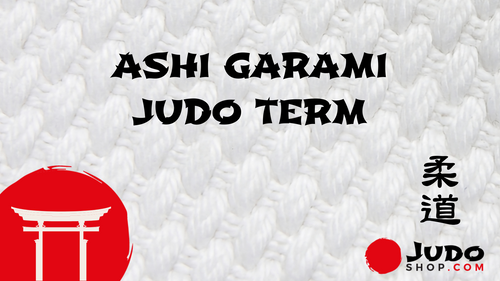
Ashi Garami - Judo Term Explained
What does "Ashi garami" mean in Judo? "Ashi garami" (足緘) is a Japanese term used in Judo that literally translates t...
-
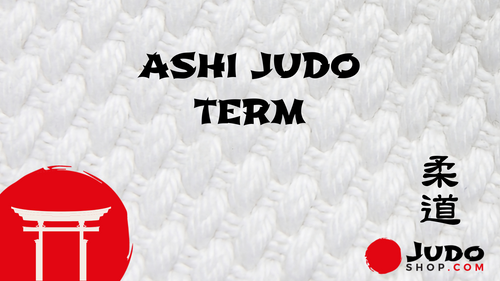
Ashi - Judo Term Explained
Ashi is term in Judo, referring to a leg or foot and category of judo techniques designed to unbalance and throw an ...
-
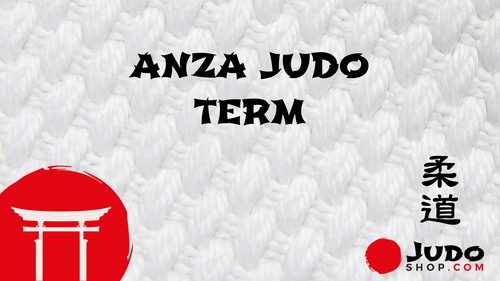
Anza - Judo Term Explained
The term Anza in Judo (安座) embodies a significant practice beyond merely sitting; it signals a deep respect and disc...
-
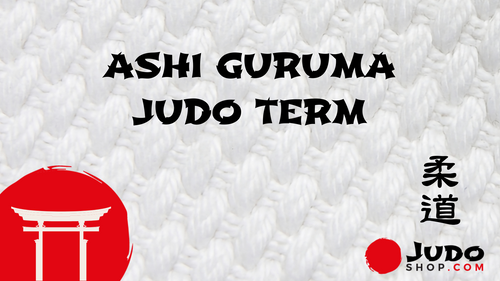
Ashi Guruma - Judo Term Explained
Ashi Guruma is a Judo term rooted in the martial art of Judo, which translates from Japanese as 'leg wheel'. This ju...
-
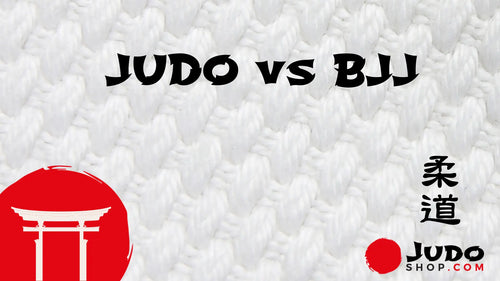
Judo vs BJJ? Of course Judo! Judo is better!
Welcome to Judoshop.com, the premier destination for judo enthusiasts worldwide. Here, we cater to beginners and vet...
-
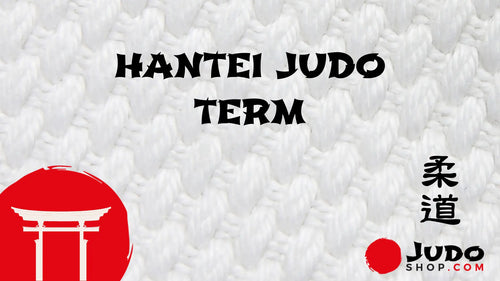
Hantei Judo Term Explanation
Contrary to popular belief, the term 'Hantei' in Judo is not just a simple decision-making process. It holds the p...
-
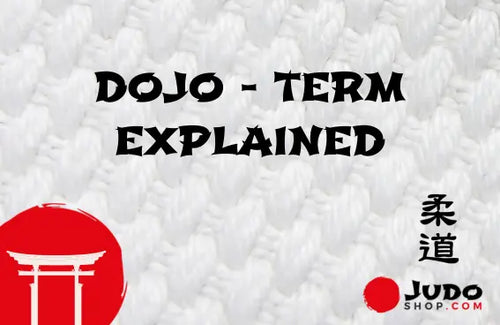
Dojo Meaning (updated 2023)
Dojos, places of immersive learning and meditation, hold great significance in martial arts. Derived from the Japane...
-
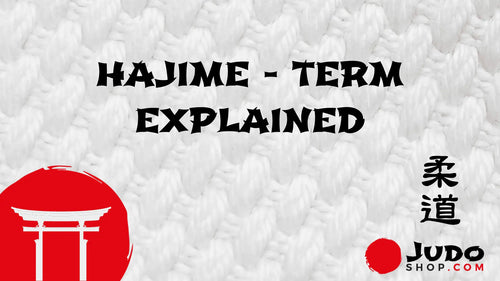
Hajime - Judo Term Explained
Ready to learn about Hajime in judo?It's all about using throws, pins, and joint locks on the mat. With the command ...
-
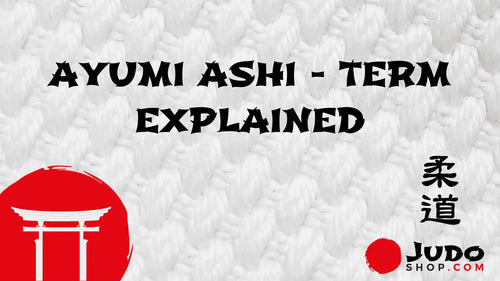
Ayumi Ashi - Judo Foot Work Explained
Are you ready to step into the world of Judo and master the art of Ayumi Ashi - 歩み足? This fundamental footwork techn...
-
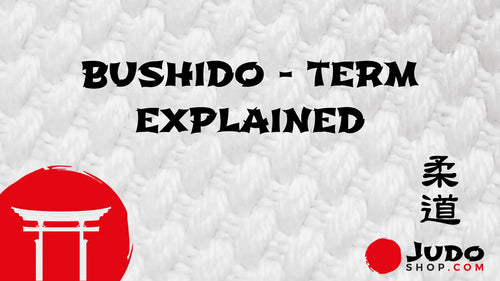
Bushido Explained
Bushido, the traditional code of ethics followed by samurai warriors in feudal Japan, is a subject that fascinates ...
-
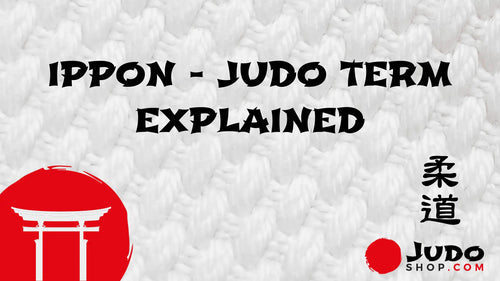
Ippon - Judo Term Explained
Imagine stepping onto the mat and feeling the adrenaline rush through your veins. In the world of judo, one ultimate...
-
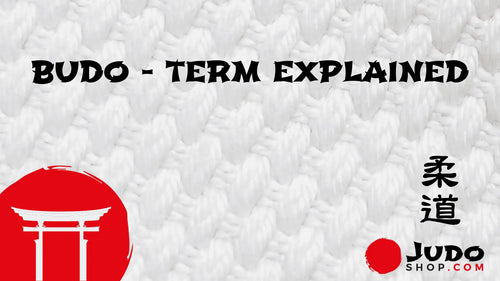
Budo - Term Explained
In a world full of chaos and conflict, one finds solace in the ancient art of budo. Contrary to popular belief, budo...
-
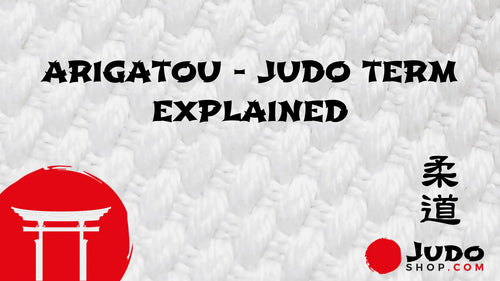
Arigatou - Judo Term Explained
Do you ever wonder about the true meaning behind the Japanese word 'Arigatou'? Well, wonder no more! 'Arigatou' is a...
-
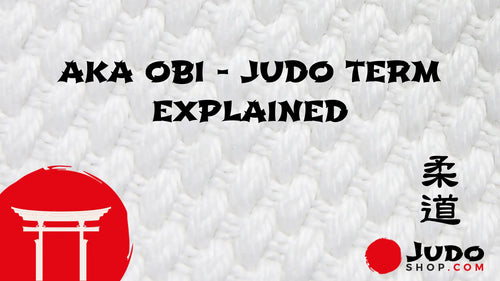
Aka Obi - Judo Term Explained
The aka obi, a red belt worn in Judo, is a prestigious symbol of expertise. Typically reserved for those holding a 9...
-

Why Are There 2 Bronze Medals In Judo
Judo is a unique sport that gives two bronze medals in each weight class. Many people wonder why this is done. To fi...
-
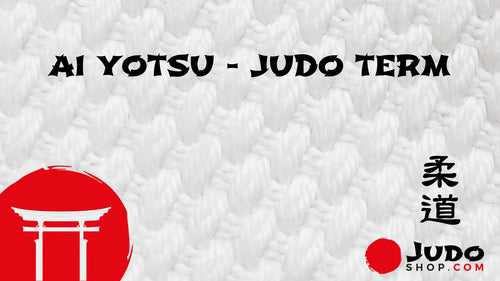
Ai Yotsu - Judo Term Explained
In the world of Judo, a term holds immense significance - Ai Yotsu. This grip, characterized by an intense and intim...
-
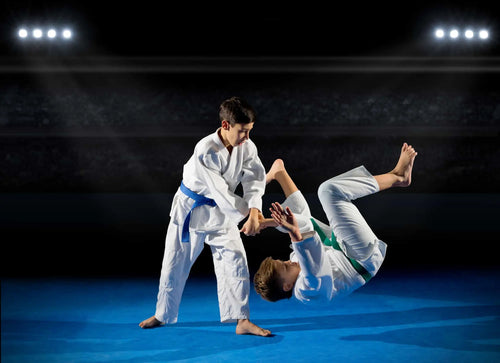
Is Judo Dangerous - Unveiling the Shocking Truths Behind this Ancient Martial Art
With its powerful throws and complex grappling techniques, one might wonder, "Is judo dangerous?" Yes, judo can po...
-

Is Judo The Toughest Sport - Unraveling the Grit and Grace of the Gentle Way
Judo, known as the Gentle Way, may seem like a paradoxical name for a sport, but don't let that fool you. While Ju...
-

Judo Terms - A Complete List of Judo Terms
Judo terms are the foundation of this martial art, and our collection is here to help both new and experienced judok...
-

English to Japanese Kanji and Hiragana translations
Are you looking for an English to Japanese Kanji translation? Here you can find more than 30 examples of Kanji and ...




























